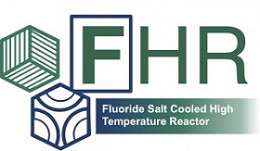Multi-physics modeling of the Pebble-Bed, Fluoride-salt-cooled, High-temperature Reactor (PB-FHR) Core
Understanding transient behaviors of a reactor is an important part of nuclear safety analysis and is crucial for licensing novel reactors. Reactor system response to anticipated transient without scram (ATWS) accidents couples thermal-hydraulics and neutronics. Software used to model such scenarios must couple these physics as required for reactor licensing. Coupled neutronics and thermal-hydraulics models, with different levels of spatial resolution, have been developed at the University of California, Berkeley to study PB-FHRs transient behaviors, including the following:
- A unit cell model based on point kinetics equations and heat diffusion theory
- A 2D and a 3D full core model that couple neutron diffusion with porous media thermal-hydraulics
Numerical models are widely used in modern scientific research, particularly in novel nuclear reactor design when experiments are not always feasible. As novel materials and isotopes are used in advanced reactor design, their nuclear and thermal properties have not yet been measured with desirable accuracy. In addition, some properties may vary during reactor lifetime due to factors such as composition change, thermal fatigue, and radiation damage. When they are used as model inputs, a study of how the uncertainties propagate to model output will provide confidence in safety margins. Conventional uncertainty and sensitivity studies require a large number of runs that can be unfeasible for computationally expensive numerical code. By building statistic emulators with machine learning methods that computes model output for untried inputs, one only needs to run the code on some pre-specified points to generate a training data set and obtain a statistical emulator, instead of running the complex code at all possible input values. The emulator can estimate output for other inputs values.

